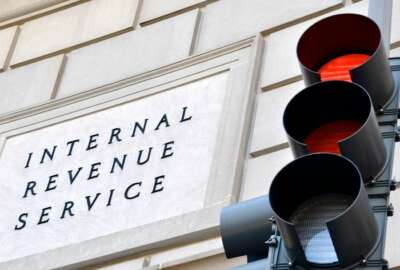

As the Internal Revenue Service rolls out its five-year roadmap to delivering faster, more efficient service, and prepares for upgrades under the next tax reform...
As the Internal Revenue Service rolls out its five-year roadmap to delivering faster, more efficient service, and prepares for upgrades under the next tax reform law, a bipartisan duo aims to restore the agency’s long-neglected oversight board.
Following an IRS oversight hearing on Thursday, Sens. Rob Portman (R-Ohio) and Ben Cardin (D-Md.) introduced the Protecting Taxpayers Act, which Portman said would “make the IRS more responsive and accountable to taxpayers.”
The bill would completely revamp the IRS Oversight Board, which the agency stood up under the 1998 Internal Revenue Service Restructuring and Reform Act.
“When we originally thought of the idea of this board back in 1998, our intent was to create sort of a board of directors for the IRS that would help guide the direction and the long-term strategy of the agency, [and] provide private-sector expertise, along with experience,” Portman said. “Every administration since then has not really supported the oversight board, including the current one, and as a result, it’s fallen by the wayside.”
Phyllis Jo Kubey, a member of both the National Association of Enrolled Agents and the IRS Advisory Council, said the agency’s new oversight board should be allowed to award bonuses to top executives if they meet certain performance benchmarks.
The nine-member board suspended operations in 2015 after it lacked enough members to reach a quorum. While Treasury Secretary Steve Mnuchin and acting IRS Commissioner David Kautter nominally sit on the board, six of the remaining vacancies require a presidential nomination.
In March, Rep. Sam Johnson (R-Texas) introduced a bill that would eliminate the “failed” board.
Portman, the chair of the Senate Finance Committee’s IRS oversight subcommittee, said his bill would help revitalize the organizational structure of the IRS and increase taxpayer protection.
“We want to get this board functioning again, but functioning in a way that was originally intended. I think it has a lot to offer to turn the agency around in areas like customer service, IT modernization, budgeting and so on,” he said.
The Portman-Cardin bill would rename the board as the IRS Management Board, and would give the board the ability to review and approve all operational plans. The board currently only has power over long-term plans.
National Taxpayer Advocate Nina Olson said the IRS Oversight Board offered valuable insight from a good mix of private-sector talent, but said agency management found the board to be intrusive.
“That battle really came to a head when the board, a few years in, tried to weigh in on IRS performance measures. I think that’s vital for the board, if it’s a management board, with experience and expertise from outside the IRS, to have a voice in those measures and even an approval of those measures. The IRS really fought that, and that became part of the demise, in my opinion, of the board,” Olson said.
Sen. Mark Warner (D-Va.) also added that the IRS needs to improve the quality of taxpayer services.
“Let’s acknowledge no one loves paying taxes, but if we can make that payment of taxes more effective, more user-friendly, more fair, I think that a process that we all have to take on as obligations as citizens will at least become less painful,” Warner said.
Under the President’s Management Agenda, the Trump Administration plans to overhaul agencies’ legacy IT systems. Of the $88 billion the federal government spent on IT last year, Warner said $75 billion of that went toward maintaining legacy IT systems.
“We’ve all seen the IRS make good-faith efforts. Sometimes those good-faith efforts have ended up with perhaps more negative publicity than upgrades,” Warner said.
National Taxpayer Advocate Nina Olson told lawmakers the IRS has struggled with modernizing its systems for the past 20 years, and that the problem has only gotten worse with time.
The IRS reportedly has two of the oldest IT systems in the federal government, both of which date back to the 1960s, and has more than 60 case management systems that all house different kinds of data, but generally cannot communicate with each other.
“There is no one system or repository of data that contains a 360-degree view of the taxpayers’ activity and engagement with the tax system, so often the left hand doesn’t know what the right hand is doing,” Olson said.
Under the tax reform law President Donald Trump signed last year, the IRS has to update more than 140 computer systems before the upcoming tax filing season.
Olson told lawmakers the IRS continues to receive work that requires it to make significant updates in the short-term, but limits its ability to pursue its long-term modernization efforts.
“I believe the IRS needs a separate stream dedicated to long-term improvement, particularly involving its IT systems,” Olson said.
Since FY 2010, the IRS’ has had its budget reduced by 20 percent when adjusted for inflation.
“Because of these reductions, the IRS doesn’t have enough employees to answer the phones, to conduct outreach and education, or to provide basic taxpayer service,” Olson said. “The IRS needs adequate funding to be able to do its job effectively.”
Cardin, the ranking member of the IRS oversight subcommittee, agreed that the agency’s budget has suffered in recent years.
“One of the chief problems is the resources. It’s hard to get consistent attention by Congress to give the Internal Revenue Service the resources they need,” he said.
While the IRS reported an 80 percent level of over-the-phone service for this year’s filing season, Olson said the count left out the bulk of calls that were directed to automated response system.
Overall, she said IRS employees answered only 29 percent of calls the agency received.
Under its five-year strategic plan, the IRS plans to expand its digital service options, including making its website more mobile-friendly, but Olson also urged to the agency to address staffing issues for in-person tax help.
Of the more than 360 taxpayer assistance centers across the country, Olson said 25 are not staffed, and 84 have only a single employee.
In FY 2017, the IRS spent less than $500 per employee in training, about one-third of its spending on training compared to FY 2009.
Earlier this month, Rick Parrish, Forrester Research’s principal analyst, told Federal News Radio that while online government services are in higher demand, the public still prefers the flexibility to have a question answered in-person, over the phone, or online.
“You can’t just roll out digital channels and, and push people to them. They’re not going to go,” Parrish said. “It’s going to be super important to make sure that customers who need, or simply prefer, to use a non-digital channel for at least part of their interaction can.”
Copyright © 2025 Federal News Network. All rights reserved. This website is not intended for users located within the European Economic Area.
Jory Heckman is a reporter at Federal News Network covering U.S. Postal Service, IRS, big data and technology issues.
Follow @jheckmanWFED


